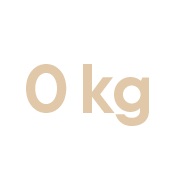Bioska technology is the result of cooperation between many specialists. Continuous advancements in raw materials have enabled us to develop all kinds of new applications. By running experiments with our customers, we learn which applications are the most useful. Consumers can encounter Bioska products in many different contexts throughout the day. You can read more about these products and product categories on this website.
Bioska’s properties

Durable
Bioska’s tensile strength and bursting strength are just as good as traditional plastics. They’re always separately defined to suit different applications.

Easy-to-use
Bioska is soft and pleasant to the touch, and takes up very little storage space.

Cost-effective
Bioska degrades as a result of natural environmental processes, so it doesn’t need to be separated out for recycling or special processing.

100% compostable
Unlike traditional plastic products, Bioska products rejoin the cycle of nature without leaving a trace.

New technology through evolving partnerships
Partnerships are long and cooperation is close.


The companies chosen to provide Bioska’s raw materials engage in sustainable production. Our partnerships are long and cooperation is close, starting right at the very beginning with material development. Close cooperation ensures that our products are as well suited to their purpose as possible.
The raw materials for our products arrive at our Ylöjärvi plant as granulates. These granulates are then blended to form a variety of raw material mixtures. The mixtures used for home composting are softer, stretchier and more degradable than those intended for industrial composting. For example, you can see how a lot of the stretch has been eliminated from a shopping bag in comparison to a biowaste bag.
Both single-layer and multilayer products available
The mixtures are melted, and the films are formed using blown film extrusion. We make both single- and multilayer films.
For example, Bioska and BioskaPlus use single-layer films. Multilayer films are used in shopping bags and in most of the compostable Walki®Bioska protective and packaging films.
Multilayer films can be made symmetrically, so they will stay straight when placed on a table – just like a piece of paper. Asymmetric films will be rolled, as the surface tensions of the innermost and outermost layers are different. Making the innermost and outermost layers from different materials results in easy-to-use packaging materials. The innermost material clings together even at low temperatures, but the outermost layer doesn’t, so a closed package won’t stick to the production line.
By adding different raw materials to different layers, even fine films can achieve good tensile strength and bursting strength.
Biowaste sorting stations need new materials
R&D cooperation with our partners is ongoing in a number of areas. For example, Bioska specialists are currently working with the City of Oslo to find out how a biogas plant that uses an optical reader in its biowaste sorting process can switch from traditional plastic bags to compostable bags.
Regular biowaste bags can’t withstand the vibrations and pressure blasting of this process. However, plastic residue from traditional bags is not acceptable to farmers, who use the products they receive from the biogas plant as nutrients for their fields. The solution now being tested is triple-layer, black-and-white Walki®Bioska 903 packaging film.
Bioska’s environmental footprint
Bioska has the greatest positive impact on the environment when we help consumers and waste management to collect biowaste and deliver it for reuse. We’ve also minimised our own environmental impacts. For example, our production is carbon dioxide neutral and we reuse any surplus materials.

Bioska’s compostability
Bioska breaks down 100 per cent into carbon dioxide and water – and even in marine conditions, according to a study carried out by SYKE in autumn 2019.

CO2-neutral production
Our use of wind power and waste heat recovery makes Bioska’s production CO2 neutral.

Eco-labels
All of Bioska’s products meet the EN 13432 standard. Our production facilities are certified in accordance with ISO 14001, 22000 and 9001 standards.
